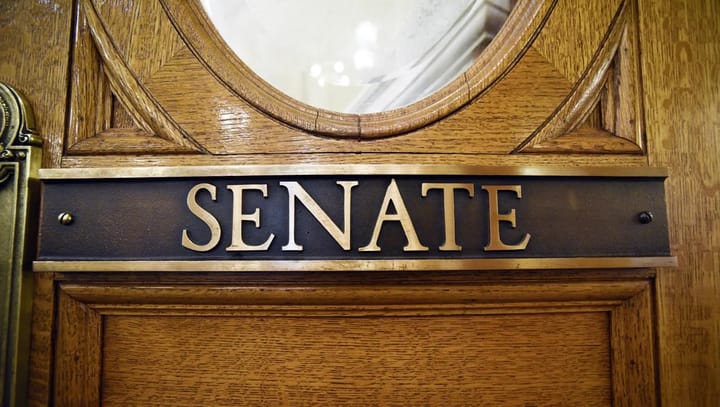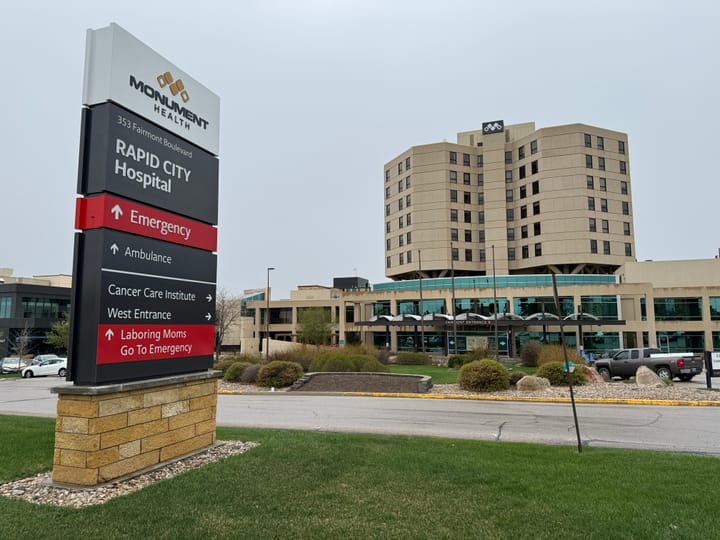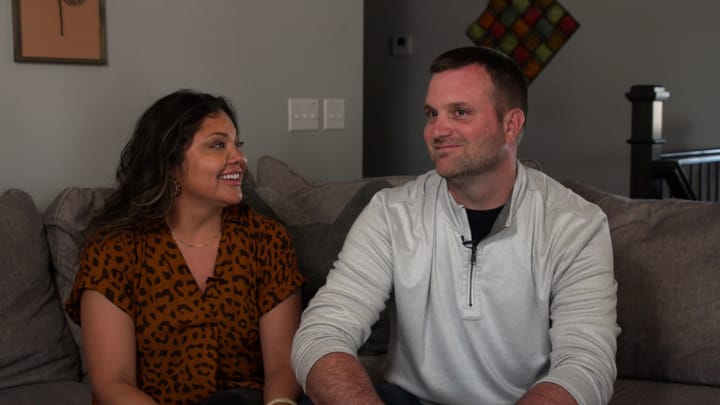Halt to abortions in South Dakota during pandemic led women to get procedure in other states
A temporary halt to abortions in 2020 at the only clinic in South Dakota where the procedures take place led to a big drop in abortions performed in the state last year, but it did not prevent women who wanted to terminate their pregnancies from doing so elsewhere.
During the seven-month pause in procedures at the Planned Parenthood clinic in Sioux Falls, hundreds of South Dakota women traveled out of state to get an abortion and many requested financial help to pay for and get access to the procedure.
Advocates for abortion rights say some South Dakota women also turned to potentially dangerous alternatives in an attempt to terminate their pregnancies in 2020.
According to a data analysis by News Watch, abortions performed in South Dakota fell from about 400 in 2019 to 125 in 2020. But last year, more than 450 South Dakota women traveled to a different state to obtain an abortion, far more than in a typical year, according to statistics from health departments in neighboring states.
The decline of in-state abortions in 2020 is largely attributed to Planned Parenthood halting the procedures for seven months, when the out-of-state physicians that typically travel to Sioux Falls to do the procedures one day a week were restricted from travel due to COVID-19.
Abortion rights advocates say women in South Dakota have for years traveled long distances to out-of-state clinics because of the restrictive laws in their home state.
But data from neighboring states clearly show that pregnant women in South Dakota more frequently traveled to other states for the procedure in 2020 compared to previous years.
“Historically, we know people are going to get abortions whether it’s available or not, whether it’s legal or not,” said Kim Floren, a board member of the Justice Empowerment Network, the former National Abortion and Reproductive Rights Action League of South Dakota. “There’s no reason people should have to risk their health and safety to have bodily autonomy in 2021. Everybody should have the right to decide what to do with their body regardless of where they live.”
In October 2020, Planned Parenthood in Sioux Falls resumed offering abortions one day per month and recently started offering the procedures two days per month.
One leader of the anti-abortion movement in South Dakota said the pause on the procedures in the state in 2020 “saved more lives,” was “wonderful” for the efforts to eliminate abortion in the state and is one of a number of factors contributing to the anti-abortion movement “winning this war.”
“This temporary halting of abortions in South Dakota … it’s one of the good things that came out of COVID restrictions,” said South Dakota Right to Life Director Dale Bartscher. “It is our goal to see that abortion is illegal and unthinkable.”
Advocates for the right to choose abortion say the pandemic amplified the desire of women to avoid the rigid restrictions on women’s access to the procedure in South Dakota. They said that getting the procedures during the pandemic was disproportionately more difficult for women with lower incomes, women in rural areas and women of color.
Some pregnant women leave the state to sidestep South Dakota’s two mandatory doctor’s appointments and the 72-hour waiting period, the longest pre-procedure waiting period in the country. South Dakota also requires that women get counseling from a pregnancy help center in those 72 hours and that doctors must give state-mandated medical language to patients before the procedure.
South Dakota also does not help pay for abortions, and is the only state to not comply with a federal requirement that the state Medicaid health insurance program pay for abortions in cases of rape or incest. A federal Government Accountability Office report released in 2019 said South Dakota hasn’t complied since 1994; Gov. Kristi Noem’s Office said this week South Dakota would continue to not cover abortion costs under Medicaid.
“‘Hard’ isn’t even the word for it,” said Evelyn Griesse, co-founder of the abortion rights group South Dakota Access for Every Woman. “It has become much more punitive against women across the country, and against practitioners.”
Griesse, who has been an advocate for abortion rights since the 1973 Roe v. Wade Supreme Court decision that legalized the procedure, said her organization helps around 150 to 200 women gain access to the procedure in a typical year. In 2020, she estimates more than 300 reached out for help.
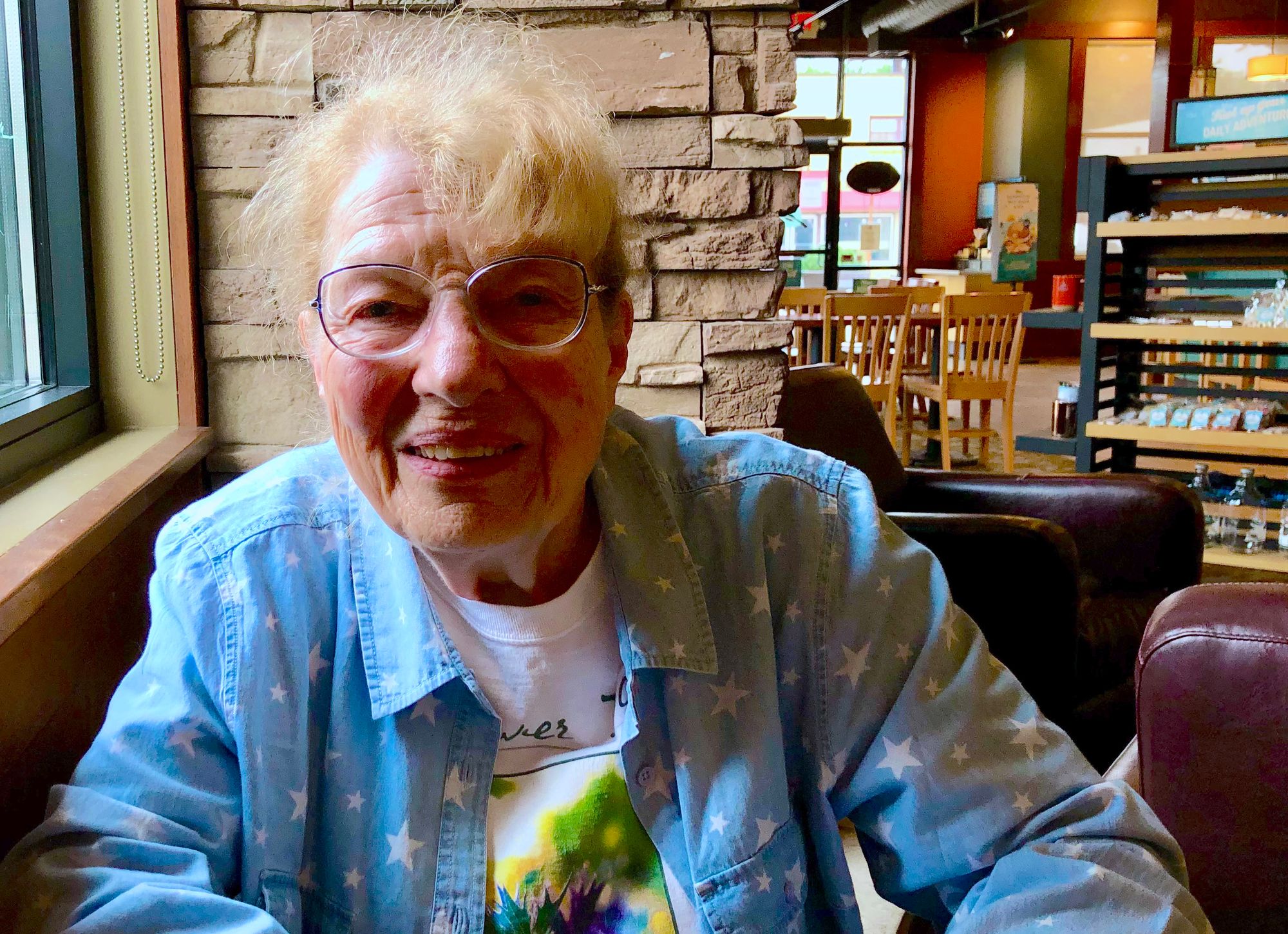
In 2019, 33 South Dakota women went to Nebraska for an abortion. In 2020, 132 traveled there for the procedure. Last year, 152 South Dakota women traveled to Minnesota for an abortion, compared to 99 in 2019.
North Dakota, which also has just one abortion clinic, took in 10 more patients from South Dakota in 2020 compared to the year prior. Overall, the number of abortions in North Dakota slightly increased last year, from 1,121 in 2019 to 1,171 in 2020.
Iowa experienced a jump of nearly 200 out-of-state patients seeking an abortion in 2020 compared to 2019. The Iowa Department of Health did not provide data specific to South Dakota residents, but Sioux Falls-area advocates estimate a good number of those patients came from eastern South Dakota.
In 2020, 123 South Dakota women went to Colorado for an abortion, down slightly from the 134 who traveled there in 2019. Abortions there have been increasing over the last five years. An increasing number of patients from out-of-state have traveled to Colorado for the procedure in the last five years, including women from South Dakota and hundreds from Texas and Wyoming. Abortion rights advocates said they suggest the majority of women in western South Dakota go to Fort Collins, Colo., where they can complete the procedure in one visit.
Access to abortion in South Dakota has declined steadily in recent years and the number of the procedures in the state has also fallen. In the past several decades, lawmakers in South Dakota have passed and upheld among the most restrictive laws in the nation.
“Lawmakers chipped away at access, so now it’s really hard to get an abortion in South Dakota,” said Dr. Marvin Buehner, a Rapid City-based OB-GYN who does not perform elective abortions.
Nationally, women are having a harder time accessing the procedure, according to a nationwide study from the Guttmacher Institute, a primary source for research and policy analysis on abortion in the United States. The institute reports that patients travel an average 34 miles each way to access abortion, while one in five American women travel at least 50 miles to reach the closest abortion provider.
In South Dakota, that average round-trip was about 240 miles in a non-pandemic year, Floren said. Last year, after the Planned Parenthood in Sioux Falls paused abortions, that average increased to about 600 miles round trip, according to the network, which helps patients access transportation, childcare, lodging, interpreters, birth control and other support.
The majority of abortions done in South Dakota are self-paid by patients. Most abortions in the state cost between $600 and $700. Women last year requested on average $400 for gas money, lodging and aid for the procedure from the empowerment network. At one point, the organization ran out of funds to distribute because of the high demand, said Floren. Some women didn’t have transportation and some had to save money to fix a car before they could travel.
“People are needing greater amounts with all those extra problems that came with the pandemic,” Floren said. “People are struggling and you see that.”
Some women also turned to dangerous alternatives, said Floren and Griesse. Both advocates recalled stories of women who, out of desperation to terminate a pregnancy, took excessive amounts of Vitamin C or herbs, or they ordered potentially unsafe pills from the internet.
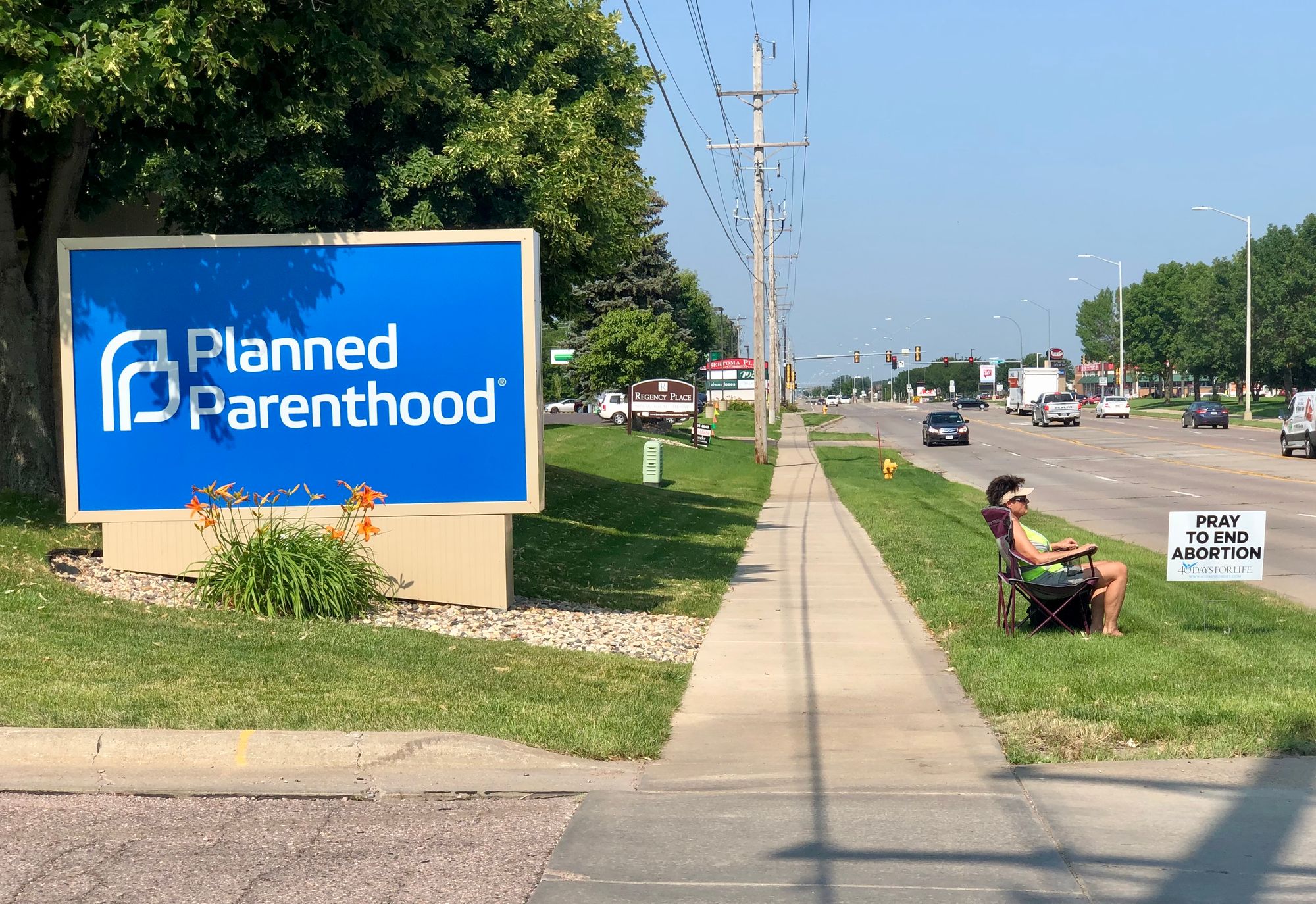
State Sen. Al Novstrup, R-Aberdeen, said he is not concerned that some South Dakota women had to drive longer distances than usual to have an abortion in 2020.
“People can’t travel an hour or two to make a life-changing decision? Like that’s a big obstacle? People drive from Aberdeen to Sioux Falls all the time for a basketball game,” said Novstrup, a new board member for South Dakota Right to Life.
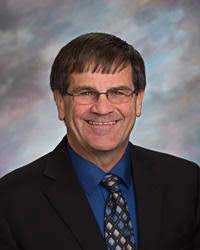
“It’s an argument that’s insulting,” Novstrup said. “To think we don’t have cars? Doesn’t match up. If you’re making a decision to end the life of your child, whether you’ve got to drive one hour or five hours, (traveling) is probably a false argument.”
Access to reproductive healthcare is even more limited for Native American women in South Dakota who primarily receive care from the federal Indian Health Service.
Due to a 1976 amendment that prohibits the use of federal money to pay for an abortion, IHS does not provide abortion except in rare cases, such as rape, incest or if the mother’s life is threatened by the pregnancy. Between 1976 and 2002, only 25 abortions were performed at an IHS facility in the U.S., according to a study from the Native American Women’s Health Education Resource Center based on the Yankton Sioux Reservation.
Birth control and the Plan B pill 一 a single, highly concentrated dose of levonorgestrel, the same hormone used in many daily birth control pills to prevent pregnancy 一 were made available to Native women over the counter three to five years after it was available for the general public, according to the center.
Indigenous women, who experience rape and incest at higher rates than any other group of women, are put at even more of a disadvantage because of this lack of financial aid and access, said Charon Asetoyer, CEO of the center.
“For Native women, it’s difficult to get the resources together to make the trip to Sioux Falls, let alone out of state,” Asetoyer said. “Last year was a very, very difficult year for women. I don’t think it’s over yet, but it did have a horrendous impact.”
Giving women the right to decide when they want to start their families and how many children they would like to have has long been a tenant of Native American culture, Asetoyer said.
“We always had the right and the knowledge to decide the size of our family, the makeup of our family and whether or not we wanted to have children or how many,” she said. “It wasn’t a decision that was made by our male counterpart. It was your decision, and it was respected.”
Buehner, who has testified in front of the Legislature against laws such as ones that include language physicians must tell patients, such as that an abortion terminates the life of a separate being and increases risk for depression and suicide, said increasing access would address inequality in the state.
“People with no means are stuck with pregnancies they don’t want and a lot of times can’t afford,” he said. “They’re in poverty, an abusive relationship, have a lot of kids. It’s a vicious cycle. Not being able to terminate an unwanted, unplanned pregnancy adds to all those problems.”
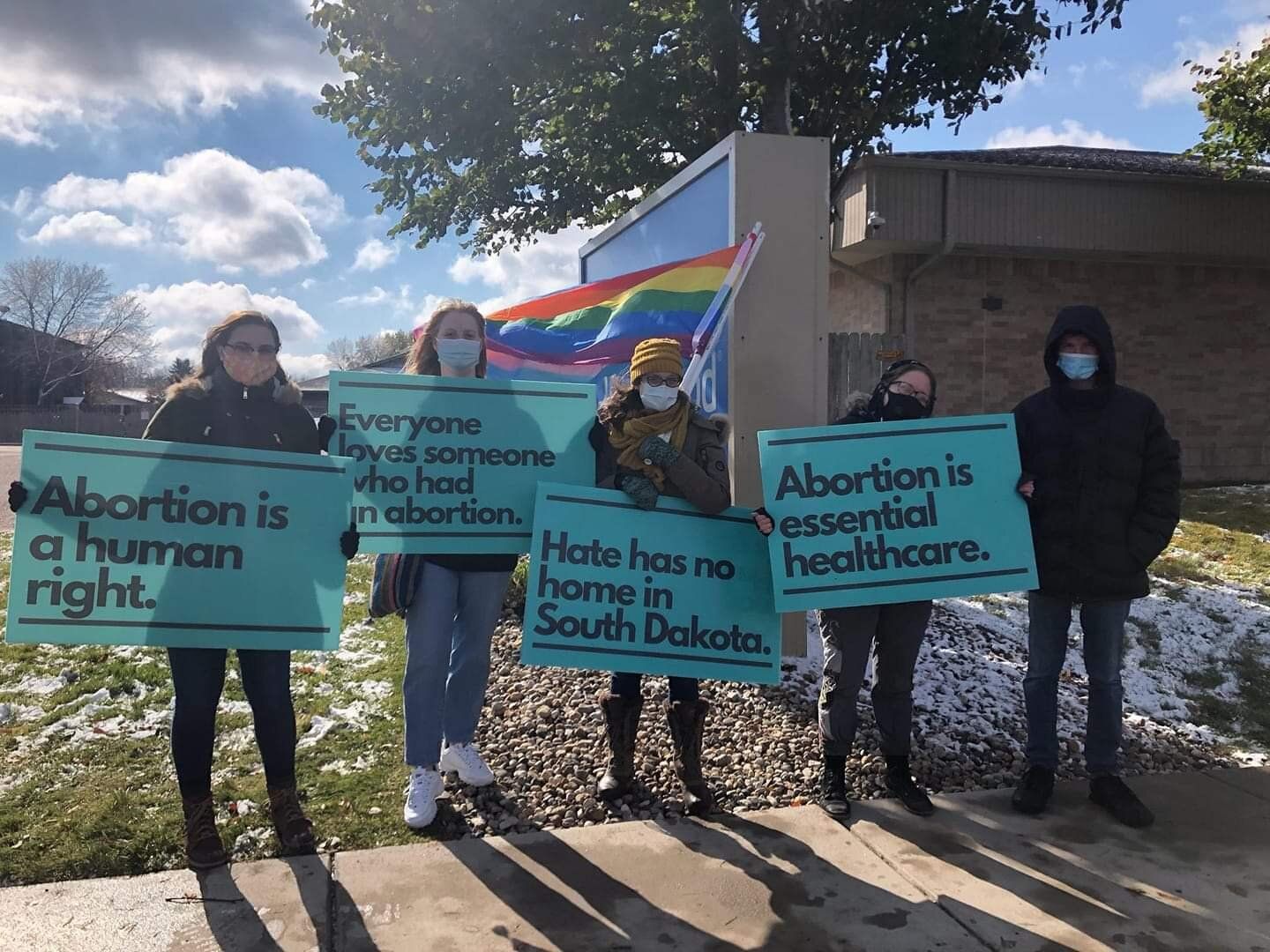
Women who receive an abortion in South Dakota do so for varying reasons, according to reports from patients provided to the state Department of Health. The proportion of women who say they get an abortion because of financial concerns has gradually increased over the last few years, from 21% in 2006, to 44% in 2016. In 2020, just over half of the women in South Dakota who sought an abortion said they did so because of financial concerns.
“A woman is the one living this situation. She’s the one that knows her circumstances the best and now if she wants to take on another mouth to feed, if another person to take care of is going to extend her too far,” said Griesse, 79, who traveled to New York to have an abortion in 1971, two years before the Roe v. Wade decision.
The seven months South Dakota stopped abortions is the longest period of time any state has gone without the procedure since Roe v. Wade.
South Dakota is one of 10 states with a “trigger” law, which would almost immediately ban abortions if the 1973 decision is reversed, according to the Guttmacher Institute.
The case threatening Roe v. Wade, centered on a Mississippi law passed in 2018, seeks to ban most abortions after 15 weeks of pregnancy, about two months earlier than the Roe v. Wade decision allows. The U.S. Supreme Court announced in May it would hear the case in its fall term, which begins in October. Noem’s office said in a statement that any changes to the state’s abortion laws wouldn’t be fully known until if and when a high court decision is made.
More abortion restriction laws have been enacted in 2021 nationwide than in any year since Roe v. Wade, according to the Guttmacher Institute, the leading organization on abortion data collection.
South Dakota lawmakers passed eight of those 90 pieces of legislation this year, including:
- The requirement that women cannot abort a child if the reason is a known diagnosis of Down Syndrome;
- That doctors face a penalty if they do not care for children born out of attempted abortions;
- That physicians read to patients that they can reverse a two-step medication abortion after the first pill and creates a penalty for anyone who coerces a woman into having an abortion. The American College of Obstetricians and Gynecologists has said the claim that a medication abortion can be “reversed” after the first pill is not supported, but said some women who do not take the second pill continue with their pregnancies.

